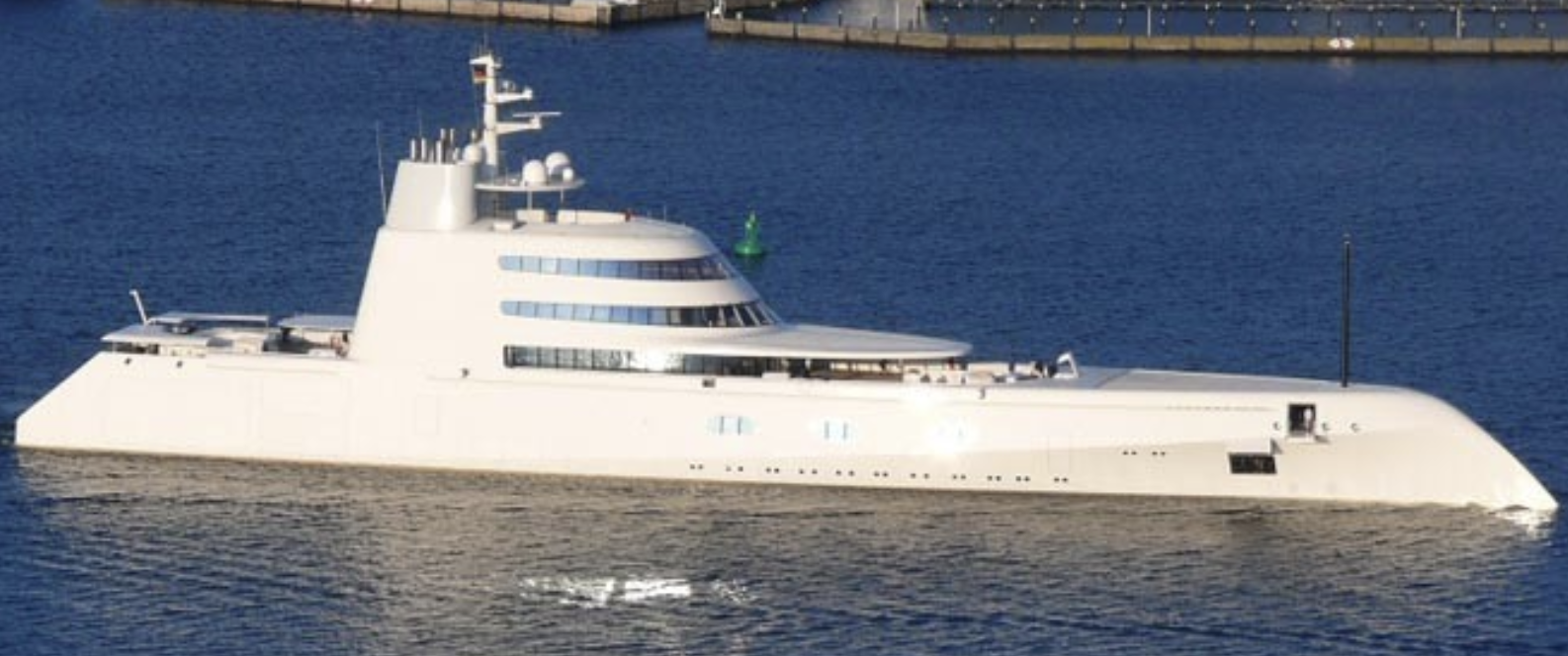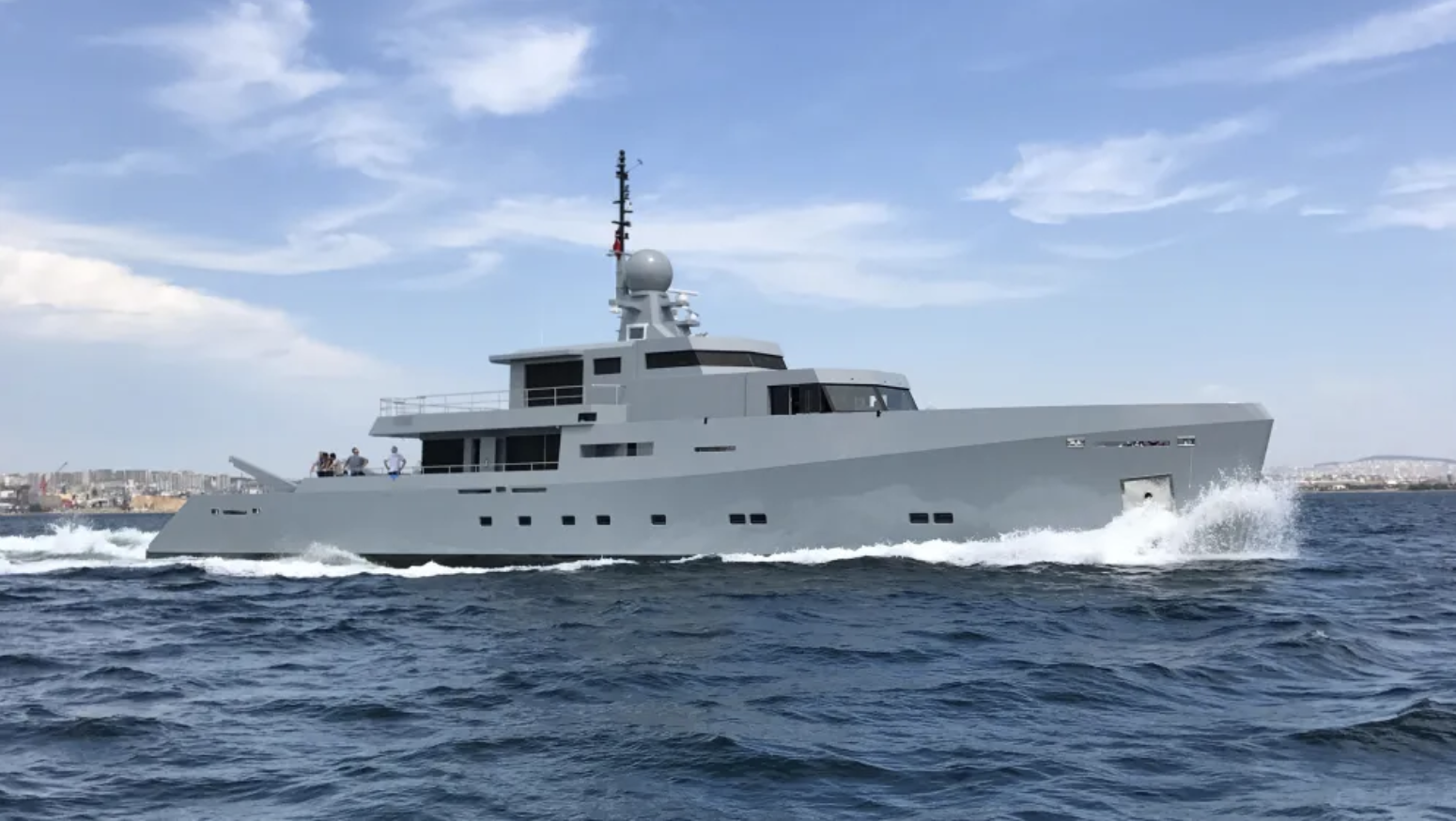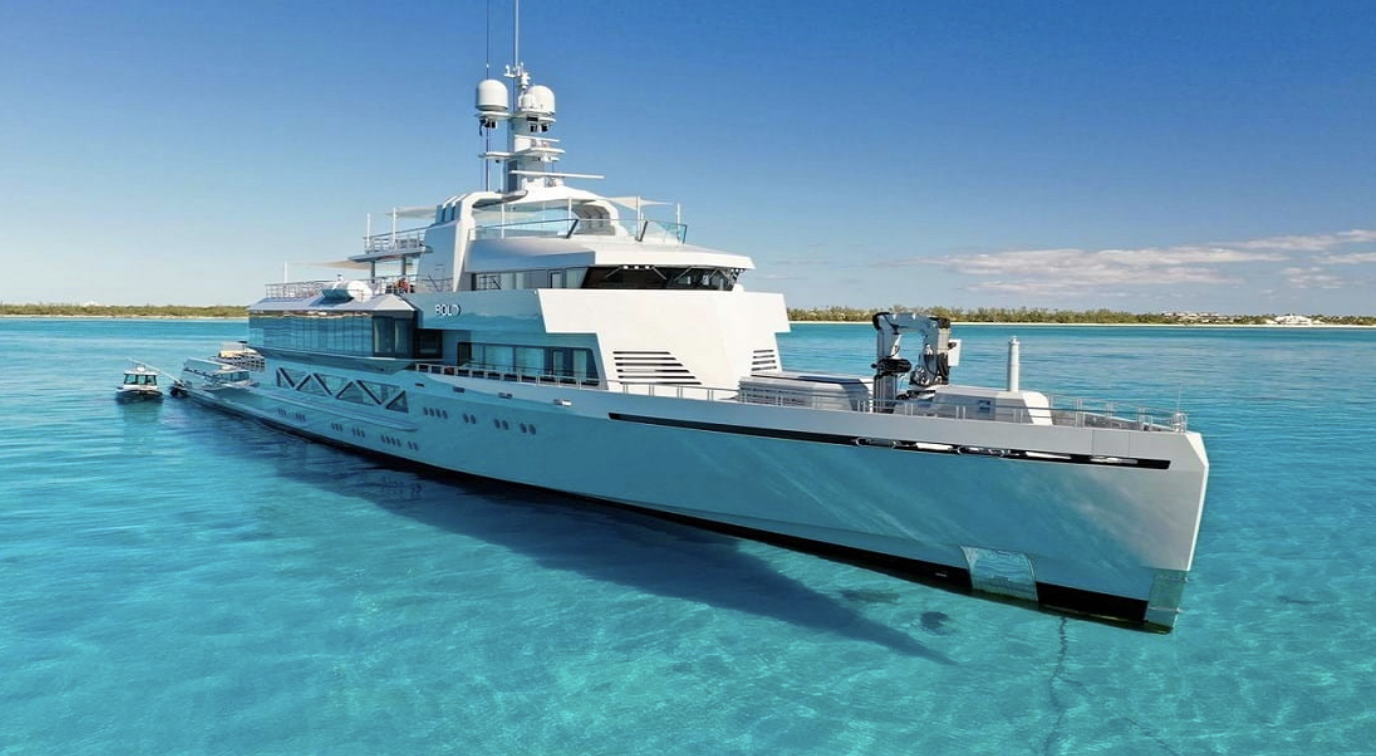Damn The Torpedoes!

Yacht Fakery
It’s gloating time again folks. Regular readers of this column know how I love to gloat when my predictions come true. About two and a half years ago, I wrote a column entitled “Yacht Fakery” in which I undertook describing what I thought would be the ultimate macho boat. To quote in part: “the hull would be painted flat back all over — bottom, topsides, deck and cockpit. A barbed ram would be affixed to the bow (sort of like the one on the “NAUTILUS” in Jules Verne 20,000,000 Leagues Under the Sea)…” But really guys… I WAS ONLY JOKING!!! You Italians didn’t have to take me seriously.
There, at the end of the main hall of the Genoa Boat Show was a big, fast, menacing Baglietto about 86 feet long. She was roughly finished and so ominous looking that a couple of these babies in the Persian Gulf would send the Ayatollah back to his tent. Has the Age of the Paramilitary Motor Yacht arrived? Will we, in the future, cruise about in motor yachts that look like well-used gun boats or floating agricultural implements? When you think about it, it’s really the next logical step. Year after year as the finishes of motor yachts improve to the point that they are floating polished gemstones with flawless exteriors that look like fine lacquered furniture, there is no room for improvement.
Time to readjust your sights — time to shake people up and try something new. Once you’ve reached perfection, there’s nowhere to go but down and, since the Italians decided they couldn’t improve on some of the beautiful finishes they were producing, they decided to go the other way and produce a truly rough, unfinished, industrial grade motor yacht — the marine equivalent of fatigues. The vessel was aluminum and the hull was completely unfaired. Hull plating was allowed to appear “as welded” and it was “washboard city” with rough welds and wavy rails flaunted. The paint was so flat it looked like ultra-suede. A big, blunt battering ram was welded to the bow. The vessel was “finished” (I use that word loosely) in khaki and silver. Although she had a name on her side, numbers would have been more appropriate.
I carefully studied her lines. There… up in the flying bridge… something strange but I couldn’t put my finger on it. After further scrutiny, I realized that the flying bridge was asymmetrical! Intentionally asymmetrical! The mast was also off center and… what is that funny box aft of the flying bridge? I couldn’t figure it out until I went aboard. I couldn’t believe it. There, aft of the bridge and accessible to it via a door was, half sunken into the level below, a little, dark room with a seat in it. Everything inside was black and there was one porthole on the starboard side fitted with blackout curtains.

Close the door and you are in a cave. This was the navigation room of the boat and arrayed around the blackness were state-of-the-art navigation electronics. It wasn’t hard to see that the room would also make an excellent Combat Information Center. The next logical step is, of course, fitting cannons and missile launchers fore and aft -- recreational cannons and missile launchers of course. A couple of recreational torpedo tubes would be nice too. Powered by Kamewa waterjets and a pair of 2600 HP MTU’s, speeds of over 50 knots are quoted. All in all, the boat looked like a trade school project for tenth graders.
Now laugh if you will but, if you are laughing you are missing the whole point here. It isn’t that Baglietto can’t build fair, glossy, highly finished boats. Hell, just outside in the water Baglietto had a beautiful, smooth, rounded 115’er named “ADLER” with a magnificent paint job on her. This shipyard is indeed a capable one. The point is that they didn’t want to build a fair, beautiful boat. They wanted it to look like this! A salesman told me that owners actually like this look because it saves weight in fairing putty therefore making the boat faster.
The fact is, however, that fairing putty in a well-built yacht is but a minute fraction of her total weight. Besides, aluminum yachts have, in the past, been built that are so fair that they need no fairing compound (and cruised around with unfinished topsides to advertise the fact). No, there is no practical reason for this in a yacht — some people just plain like the rough look. I was informed that nine or ten of these vessels had been built thus far and they expect to build more. Reinforcing this trend was Riva who has always been known for flawless fiberglass gel coating, perfect stainless steel and magnificent woodwork.
But, alas, outside on a cradle sat a 60’ “Black Corsaro” it’s flawless, normally shiny, ebony gelcoat roughed up by what looked like 200 grit sand paper producing a very flat, black finish. It is one thing to build a boat from scratch to look rough but another thing entirely when you take a finely finished craft and downgrade it all in the name of high fashion! So, trendsetters, if you truly want to be “in with the in marine crowd” be the first in your marina to take a belt sander to your beautifully awl gripped topsides. Then apply a ball peen hammer to your stainless steel rubrails. Give the cleats and ventilators a few shot while you’re at it. And your bowrails… bend a couple of pronounced “wows” in them. A couple of shattered windows would be nice and, for the finishing touch, how about a couple of well-placed, deep gouges in your teak toe rail?
Other trends noted: a resurgence of beautifully finished all wood interiors as opposed to the “lacquered look” so prominent in Italian boats past. Waterjet propulsion is making big strides and, unbelievably, exhaust blisters are back in vogue. I’ve written about them before but, for those who might have missed it, exhaust blisters are back in vogue. I’ve written about them before but, for those who might have missed, exhaust blisters are huge fiberglass or aluminum cowlings fitted over exhaust pipes that lead from the engines out through the side of the hull and aft to the transom. These cowlings are typically 12” or 14” square and about 15’ long grafted to the sides of the boat just above the waterline. Docking a boat with blisters protruding 12” from the hull proper had got to be a hassle but, unbelievably, Italian exhaust blisters are never fitted with rub rails or rubbing strips. It is the “look” you see. Transom of large motor yachts appear like the business end of an Atlas booster rocket. To make matters worse, these things slap terribly when the vessel rolls even moderately.
All sorts of exotic engines are finding their way into the marine field. Porsche is making inroads with their nifty V8 928 four-valve engine, as is Lamborghini with their screaming, beautiful 12-cylinder machines, CRM displayed an absolutely stunning 18-cylinder 1.850-hp diesel engine that weighed only 3.861 pounds with an aluminum block and three banks of six cylinders each.
I walked around this engine totally astounded by its beauty. The entire unit was finished in black crackle-finish paint and all the hardware was polished aluminum or chrome-plated. Sixteen chrome fuel lines flowed around the block like linguini around a sausage.
Now, I’m sure this is a great marine engine. Its power-to-weight ratio is astounding and the exhaust cry must be awesome. Still, one terrible thought kept popping into my head: “This engine would make a wonderful coffee table.”
What else did I see? I noted that bow rails fitted with a huge hoop forward (high enough for a man to walk under) are the norm here, but I couldn’t figure out why because they served no discernable purpose. Upon talking to a prominent European designer, it was explained to me that these hoops are of absolutely no practical purpose. They were carried over from the days when SSB antennas were run from the mast forward – they served to elevate the antennas forward so one could walk under them.
I noted the very beginning of a trend to murals or frescos appearing on cabin or hullside. Oh, yes — strange English boat names are “in.” There was a large motoryacht displayed on the main floor named Darling Boys. Probably one of those boats fitted with a “his-and-his” head.
How to Return a Rental Car
One of the high points of this trip was my valiant attempt at returning a rental car in Genoa (rented well to the south of Genoa in another city). In downtown Genoa. On a Friday morning. During rush hour. In the rain!
With only the most basic instructions on how to find the drop-off office (I was told only which exit to take off the Autostrada), we used the “hunt and peck” method to find it. I’ll never forget the name of the road: Via Montevideo. The road map to downtown Genoa looked like a damn streptococci convention and didn’t cover the area we were looking for, anyway.
My game plan was to stop at every gas station we passed and asked instructions on the theory that each one would get us closer to our ultimate destination. Employing rudimentary Italian, Portuguese and many gestures, we had a fine tour of the city.
After a couple of hours of aimlessly driving around, I started getting giddy, laughing uncontrollably and saying “We’re never going to find this place. They’re going to find our bones along the side of the road!” I suspect that the major portion of Genoa’s bum population are former American Yuppies who, after trying to return a rental car in Genoa, eventually ran out of gas, missed their planes, ran out of money and lost their jobs. I was one of the lucky ones.
The 1987 Genoa Boat Show will be remembered fondly. The boats and equipment were fantastic. The show was well organized. Our stay in Camogli was almost dreamlike (except next year I’ll bring ear plugs — see last month’s column and you’ll know why). The food was outstanding and Italy, in general, was delightful. I look forward to Genoa 1988 with bated garlic breath!
(Reprinted with permission of Regina Fexas.)
If you would like to read more of Tom's pearls of wisdom, tune in next Friday — "Fexas Friday."
Better yet, why not get a full dose of infectious Fexas whenever you need it — and buy one of the volumes below. Better yet, why not buy all of them — we call them the "Fexas Five." They will provide many evenings of fun reading (better than Netflix), and you'll make the widow Regina very happy knowing that Tom will live on with you the way most of us remember him.
Order 1, 2 or "The Fexas Five" —
To find the "Fexas Five" on Amazon, click here...
Tom Fexas (1941-2006) was one of the most influential yacht designers of the last quarter of the 20th century. With the narrow Wall Street commuters that were built in the 1920s and '30s always on the back of his mind, he wanted to design boats that were at once fast, comfortable, seaworthy and economical to operate. Over the years, he and his firm designed over 1,000 yachts for some of the most prestigious boat builders in the world, including Choey Lee, Palmer Johnson, Grand Banks, Mikelson Yachts, Burger, Abeking & Rasmussen and many others.
Even though toward the end of his career he only designed megayachts and superyachts, including the remarkably influential PJ "Time" in 1987, he is best remembered for his first major vessel in 1978 -- Midnight Lace -- which became a series of 44-52-footers. They were light, narrow, and fast with relatively small engines. He was also influential in the boating community because of the monthly column he wrote for Power and Motoryacht, which began in its very first issue in January 1985.


